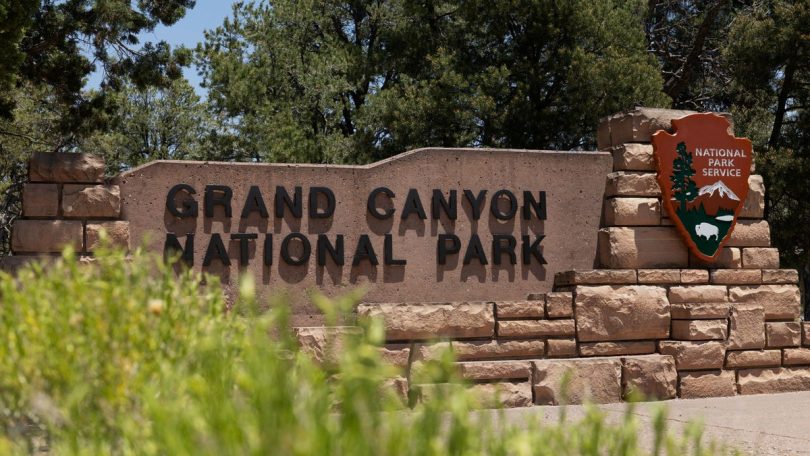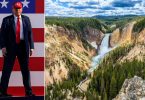National Parks: Rarely visited parks worth going out of your way for
These are among America’s least visited national parks, excluding remote places like Alaska, the Virgin Islands, American Samoa and Dry Tortugas.
Staff video, USA TODAY
- President Trump signed an executive order increasing national park fees for non-U.S. citizens.
- The order also prioritizes American citizens for park access and revokes Obama-era diversity directives.
- Michigan has several national parks and sites that could be affected by the order, including Isle Royale, Sleeping Bear Dunes and Pictured Rocks.
Visiting Michigan’s national lakeshores and parks is about to get more expensive for international tourists because of an executive order issued by President Donald Trump.
The new order calls for charging non-U.S. residents higher fees for park entry and recreation passes, including the yearlong America the Beautiful pass, which grants access to public lands across federal agencies, as well as pulling back on DEI orders under President Barack Obama and President Joe Biden.
“From the awe-inspiring Grand Canyon to the tranquility of the Great Smoky Mountains, America’s national parks have provided generations of American families with unforgettable memories,” Trump said in the July 3 order.
“It is the policy of my Administration to preserve these opportunities for American families in future generations by increasing entry fees for foreign tourists, improving affordability for United States residents, and expanding opportunities to enjoy America’s splendid national treasures,” he said.
In Michigan, people can visit a national park (Isle Royale), two national lakeshores (Sleeping Bear Dunes and Pictured Rocks), a national battlefield park (River Raisin in Monroe), a national historic park (multiple sites in the Keweenaw Peninsula) and a national heritage area (Detroit). Only Isle Royale and the lakeshores entry charge fees.
Any revenue generated by higher fees from foreign tourists, Trump’s order says, will be funneled back into infrastructure improvements and other enhancements across federal recreation sites. The order also requires a review of maintenance needs and stipulates that the Secretary of the Interior will take steps to make necessary improvements.
USA TODAY reached out the Interior Department and National Park Service for comment on the new executive order.
What to know about the order and Michigan’s national parks.
Preferential treatment for U.S. citizens
The order calls for giving Americans “preferential treatment with respect to any remaining recreational access rules, including permitting or lottery rules.”
Ending diversity directives from Obama era
The executive order revokes a presidential memorandum signed by then-President Barack Obama in 2017 that promoted a range of diversity and inclusion efforts in the management of national parks and other public lands.
It called for improving access for all Americans and “considering recommendations and proposals from diverse populations to protect at-risk historic, cultural, and natural sites.”
Diversity and inclusion were also priorities for parks during the Biden administration.
Before leaving office in January, then National Park Service Director Chuck Sams told USA TODAY: “When I took my oath of office on the steps of the Lincoln Memorial, Secretary (Deb) Haaland said, on behalf of the president of the United States, myself and the American people, I’m charging you with these monuments, memorials and parks, but more importantly, we’re charging you to find those stories that are less told or haven’t been told yet, and to tell them fiercely.
“So over the last three-plus years, working all across the park system, we’ve been able to tell stories to ensure that every American sees a reflection of themselves in the parks,” he said.
But the latest move comes after Trump on his first day back in office in January ordered an end to government diversity, equity, and inclusion programs established under Biden.
How many tourists visit Michigan’s National Park Service lands? How much do they spend?
In 2023, 2.8 million park visitors spent an estimated $273 million in local gateway regions while visiting National Park Service lands in Michigan, the NPS said. The expenditures supported a total of 3,730 jobs, $139 million in labor income, $237 million in value added, and $413 million in economic output in the Michigan economy.
The statistics were not broken down by domestic or foreign visitors.
Visitor spending around Sleeping Bear Dunes totaled $197 million, Pictured Rocks about $46 million, River Raisin about $17 million, Isle Royale about $12 million and the Keweenaw area about 42 million.
What to know about Pictured Rocks National Lakeshore
In 1966, Congress designated the area along Lake Superior’s southern shore between Munising and Grand Marais as the nation’s first national lakeshore, but the park’s features are more than 10,000 years old.
The namesake of the park is the multicolored sandstone cliffs that stretch for 15 miles along Lake Superior’s south shore. The cliffs are streaked with various minerals that leave different colors behind.
Pictured Rocks National Lakeshore saw 910,939 total visitors in 2023, a 1.5% decrease from 2022 and a 30% decrease from 2021, where the park saw its highest visitation of 1.3 million visitors, according to the National Park Service.
Standard pass fees are $15 (snowmobile) to $25 (private vehicle), and $25 to $100 for commercial vehicles. An annual pass for the lakeshore is $45. America the Beautiful passes range from free to $80.
What to know about Sleeping Bear National Lakeshore
Sleeping Bear Dunes National Lakeshore, northwest of Traverse City, welcomes 1.5 million visitors each year, according to the National Park Service.
The national lakeshore offers towering sand dunes to navigate, beaches for swimming and sunbathing, hiking and biking trails, inland Manitou islands, historic coastal villages and museums, camping, forests, rivers and inland lakes for kayaking or tubing or canoeing, a lighthouse and more. The tallest dune is 450 feet.
Entrance passes to the lakeshore include a $25 standard pass, with varying prices for larger vehicles; $45 annual pass and America the Beautiful pass at varying prices. There are also seven-day digital passes.
The America the Beautiful National Parks and Federal Recreation Lands pass is $80 for an annual pass, $80 for a senior lifetime pass, $20 for a senior annual pass and free for military annual pass, military lifetime pass, access pass, fourth grade pass, and volunteer pass.
What to know about River Raisin National Battlefield
River Raisin park preserves, commemorates, and interprets the January 1813 battles of the War of 1812 and their aftermath, the park service said, that resulted in the greatest victory for Tecumseh’s Confederation and the British and the greatest defeat for the U.S.
The park includes the battlefield itself, as well as a nearby visitor center. The park visitor center includes a diorama of the River Raisin settlement, orientation maps, ranger programs, basic park orientation, and gift shop.
The park sits on the north bank of the River Raisin, along Elm Avenue. The visitor center is across the street along North Dixie Highway.
No entrance pass is required to access River Raisin National Battlefield Park, according to the park service. There is also no charge to view the film “The Untold Legacy of the River Raisin” in the park’s theater.
What to know about Keweenaw National Historic Park
The Keweenaw National Historic Park includes a variety of sites throughout “Copper Country” in the Keweenaw, many of which are privately operated.
The Calumet Visitor Center is located at 98 5th Street in downtown Calumet. Visitors can explore two floors of interactive exhibits, films, and museum pieces focusing not only on mining history, but also the social aspect of the communities that developed to support mining operations, the park service said.
An entrance pass is not required to access Keweenaw National Historical Park, but privately operated sites within the park area may charge fees.
What to know about Isle Royale National Park
Isle Royale National Park, one of the nation’s least-visited and most remote parks, offers a rugged landscape in the middle of Lake Superior to explore in the northern Great Lakes, according to Pure Michigan. The park is operated by the National Park Service, the lone national park in Michigan.
There are more than 400 islands, some tiny, that make up the archipelago. Isle Royale, the park’s main island, is 9 miles wide and 50 miles long, the park service says.
In addition to reaching the islands via private boats, there are several seaplane and ferry routes to the archipeligo.
Some lodging options are available on the island, including the Rock Harbor Lodge and the Windigo Camper Cabins. The island has boating docks, multiple campgrounds with options for group camping, inland lake paddling campgrounds, trail accessible campgrounds and Lake Superior accessible campgrounds.
Isle Royale National Park charges a $7 per person daily entrance fee to enter or remain within the park per calendar day. The Isle Royale season pass costs $60. Federal lands passes (annual, military, veteran, senior, access, and volunteer) are accepted at Isle Royale.
What to know about the MotorCities National Heritage Area
Congressionally designated in 1998, MotorCities National Heritage Area preserves the story of how tinkerers became titans and how auto and labor helped build the middle class while transforming manufacturing worldwide, the park service says.
The area encompasses the Automotive Hall of Fame in Dearborn, Henry Ford Museum in Dearborn, Detroit Historical Museum, Edsel and Eleanor Ford home, Ypsilanti Automotive Heritage Museum, Gilmore Car Museum near Kalamazoo, Alfred P. Sloan Museum in Flint, Ford Piquette Avenue plant, R.E. Olds Transportation Museum in Lansing and the Old Mill Museum in Dundee.
The sites included in the heritage area all are operated by groups other than the park service and charge entrance fees.
— USA TODAY contributed to this story.










